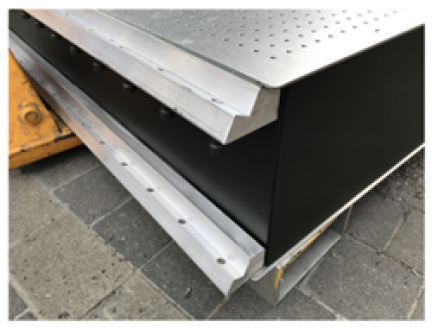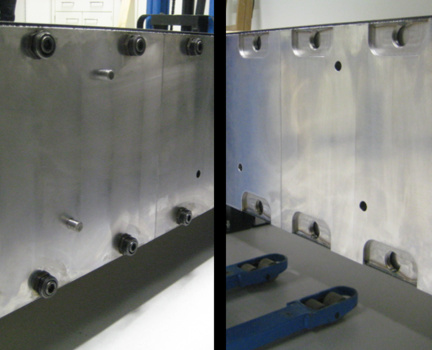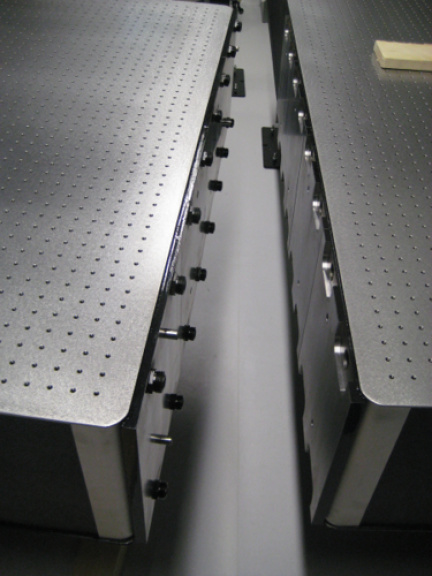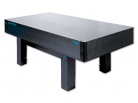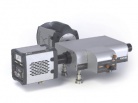Anti-vibration optical tables provide a flat, rigid and stable surface for mounting optical components. If the optical beam path is excessively long, a proportionally large anti-vibration surface must be created by joining multiple tables. The maximum size of a single table is typically limited by the size in which the top (bottom) steel plate can be manufactured, which is 4800 x 1500 mm. Where a larger work area is required, optical table joining technology comes into play. Not all manufacturers construct the joined tables in the same way, which affects the resulting table performance. In this application note, we will focus on how to select optical tables for applications that require a large surface area to isolate unwanted vibrations.
Where the tables touch, there is naturally a joint to connect them. This joint must be made with precision to ensure a solid and homogeneous surface over the entire area of the joined tables. So what key features should you consider when choosing optical tables?
Strong welded steel plates that cover the entire side of the table, from the top plate to the bottom one. The connecting plates on adjacent tables are then bolted together to form a strong joint.
Alternative table designs simply bolt the plates together using couplers for the connection. However, this method does not achieve a perfect connection and creates a gap between the tables that significantly reduces the strength of the joint. No reinforcement is created in the space between the honeycomb cores of the tables.
TMC uses two 19 mm thick steel plates that cover the entire side wall of the table. These plates are welded to the top and bottom table top and then joined together using a 25.4 mm coupling nut. This makes the plates even stronger than the honeycomb core of the table, providing unrivalled strength and stability.
The connecting plates bridge the gap between the table edges and ensure the integrity of the cores along the entire length of the joined optical tables. In addition, the unique design of the splice plates eliminates the occurrence of air gaps between the splices, achieving the maximum level of strength and splice force.
Other methods of joint construction very often only connect the top and bottom layers of the tables, omitting the center of the table altogether. Thus, perfect integrity is not achieved and with the load, the top plate can soon become twisted and the flatness of the surface disturbed.
To ensure maximum surface strength, TMC's optical table top connector plates are welded to both the top and bottom plates. The plates thus joined achieve a total thickness of 38 mm.
Relocation of already bonded optical tables can be extremely challenging both practically and financially. Therefore, the individual optical tables are usually moved separately. The joints must not only be very strong, but also easy to disconnect.
When the plates are connected with a 25.4 mm diameter nut, contact is made from the top to the lowest part of the table. The surface thus created can reach large dimensions (up to 18 m long) and have many sections. A high level of strength and stability is required to maintain surface flatness across the entire surface.
The chamfered steel connecting pins (four pins per joint, two on each side) fit precisely into the hole in the steel plate of the adjacent table, ensuring a perfect connection between the tables.
Once the connecting pins are in place, the connecting nuts come in to seal the joint. The result is a co-axial solid connection between all optical tables.
Conclusion
Not all optical tables are constructed in the same way. Therefore, when choosing an optical table, pay close attention to the way the tables are joined. Larger and more complicated projects will put more stress on the connections. It is therefore important that the joined tables provide a solid, stable and level surface to dampen unwanted vibrations.
You can download your copy of TMC's application report here.
